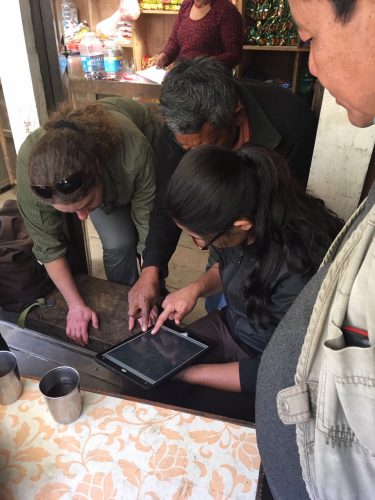Illuminating a Sustainable Future Through Light Data
Close your eyes and imagine yourself on the moon. It is night, and before you, the glow of cities, sprawl, and human activity illuminate Earth.
Yale Professor of Geography and Urbanization Karen Seto and Ph.D. Candidate Eleanor Stokes spend their time marveling at these lights — but not with their bare eyes. Instead, they see through the eyes of Visible Infrared Imaging Radiometer Suite (VIIRS), a real-time sensor on the NASA/NOAA Suomi-NPP satellite that collects high-resolution nighttime imagery of Earth.
The Seto Lab processed raw VIIRS imagery and analyzed nighttime light intensity patterns for cities across the globe. They discovered that after accounting for confounding factors like light pollution or moon reflectance, VIIRS data acts as a proxy for electricity usage within individual cities. The connection between nighttime lights and electricity usage may seem intuitive, but previous metrics have typically relied on national rather than localized data, leading to mis-generalizations about individual cities’ energy usages. Thus, VIIRS provides more precise energy usage analyses. “I’m very excited about the scope, that it’s global, yet we also look at the within-urban scale to assess the world,” Stokes said.
Cities can use the new data to tackle local sustainability issues. Potential VIIRS applications include facilitating disaster relief planning, foreign urbanization development, and transportation sustainability. For example, tracking road connectivity via lights could pinpoint traffic-congested zones in need of re-design, and tracing light usage after earthquakes may reveal areas with limited resource access. Indeed, VIIRS can drive sustainability efforts by using data relevant to each glowing city in our illuminated world.
References
[1] Interview with Eleanor Stokes, Yale School of Forestry and Environmental Studies, interview on 1/25/18, most information taken from this interview
[2] https://jointmission.gsfc.nasa.gov/viirs.html – Used website for info about VIIRS
[3] https://journals.sagepub.com/doi/full/10.1177/0265813516658477

